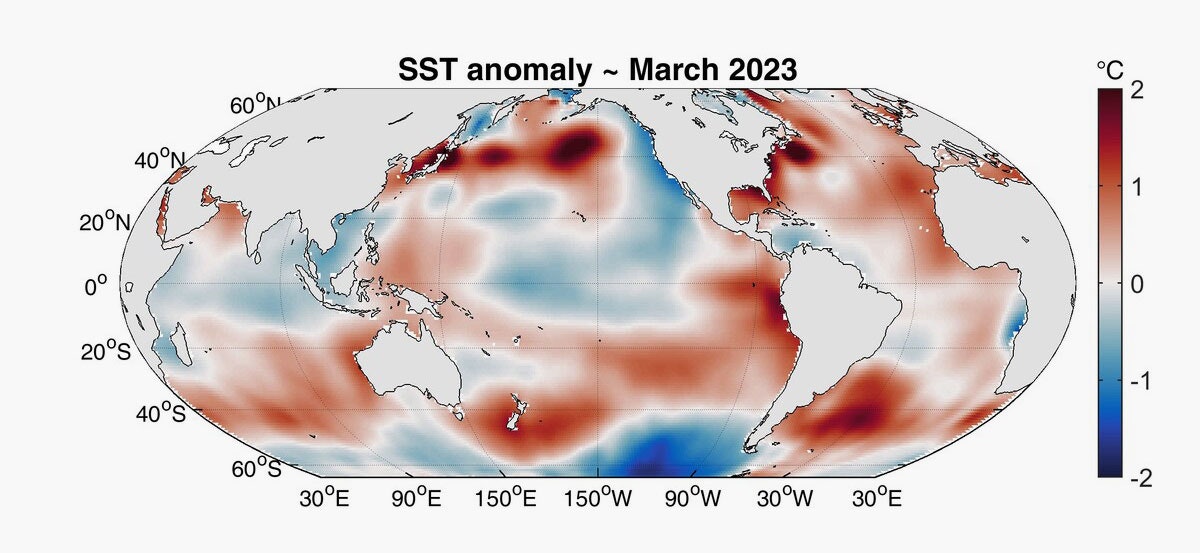Illustration: MBARI
The dark red areas on the map above show that the Pacific waters off of South America are currently very warm. This is an unusual “coastal El Niño” that is not linked to the larger El Niño with global climate implications, says biological oceanographer Francisco Chavez of the Monterey Bay Aquarium Research Institute. A classical El Niño is a band of warm water that develops across the Pacific. That’s in contrast to the La Niña we’ve had the past few years, which is a band of cold water in the Pacific.
Models suggest there’s a 62 percent chance of a classical El Niño developing by June or July, with a four in 10 chance of a strong El Niño. But it’s not a sure thing because El Niño is a consequence of complex atmospheric dynamics—basically, wind blowing warm water over from Asia. “There’s still a lot of uncertainty,” says Chavez. “Forecasting the real El Niño is difficult because the atmosphere is chaotic.”
Whenever El Niño does arrive, it’ll have consequences. On the upside, there tends to be less hurricane activity over in the Atlantic when El Niño is active in the Pacific. But the outcomes for precipitation are mixed: For Peru, El Niño tends to create more rainfall, but to the east in the Amazon rainforest, it can lead to devastating drought. And all that extra heat in the Pacific could significantly raise global temperatures. “There’s a chance for 2023 to be the record warmest year,” says Rohde. “If an El Niño develops, as we now think is likely, 2024 will probably be warmer than 2023.”
In the ocean itself, warmer waters—due to El Niño or just overall long-term heating—can become less biologically productive. Some organisms that reach their thermal limit can migrate to colder waters, transforming both the ecosystems they leave and the new ones where they take shelter. But others, like corals, are stuck in place. These animals are particularly sensitive to heat, and bleach in response, releasing their symbiotic algae that provide them energy.
The ocean food chain also depends on the natural circulation of water, which is influenced in part by temperature. When cold water in the depths upwells to the surface, it brings up nutrients that fertilize phytoplankton. These microscopic plants grow in the sunlight, becoming a critical food source for tiny animals called zooplankton. But when water heats up at the surface, it stratifies, turning into a sort of cap that sits on top of colder waters below. “The bigger the cap, the harder it is to break. By heating the ocean, you’re going to basically decrease the amount of nutrients that come up,” says Chavez. “A longer-term concern is: How much is this overall heating going to change the natural fertilization processes, like upwelling? Will the ocean become more of a desert over time?”



